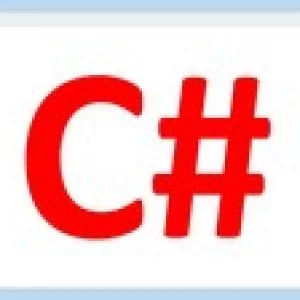
For the last two decades, computers became faster by increasing the number of CPU cores. However, the fact of having more cores itself doesn’t make a computer drastically faster if those cores are not used by software properly. We, as software developers, should know how to write asynchronous and parallel executing code to make our applications faster and more responsive.
This course is all about developing more responsive and fast programs. Multithreading and Parallel Computing are topics for those who already have some experience in programming, otherwise, you may face difficulties with understanding the content. Anyway, this course covers:
Theoretical foundations of asynchronous programming: main concepts, processes, threads and so on
Low–level Thread API, APM, and EAP
Task Parallel Library (TPL) including starting tasks, canceling tasks, chaining tasks, waiting for tasks, IO–based tasks, exceptions handling and other
Async and Await feature of C#
Synchronization including atomicity, Interlocked, Monitor (lock), ReaderWriterLockSlim, Semaphore, SynchronizationContext, and Mutex
Signaling constructs such as AutoResetEvent and ManualResetEventSlim, CountdownEvent and Barrier
Spinning including SpinWait, SpinLock and our own UpdateableSpin
ConcurrentCollections including ImmutableStack, ImmutableQueue, ImmutableList, Immutable Sets, ImmutableDictionary, ConcurrentStack, ConcurrentQueue, ConcurrentBag, BlockingCollection
Parallel Programming including Parallel class and PLINQ
Enroll and start learning the foundations of multithreading and parallel computing in .NET.
Instructor Details
Courses : 17
Specification: Multithreading and Parallel Programming in C#
|
10 reviews for Multithreading and Parallel Programming in C#
Add a review Cancel reply
This site uses Akismet to reduce spam. Learn how your comment data is processed.

| Price | $14.99 |
|---|---|
| Provider | |
| Duration | 7 hours |
| Year | 2020 |
| Level | All |
| Language | English |
| Certificate | Yes |
| Quizzes | No |

$69.99 $14.99






Fredy N esch –
Das verwendete Englisch ist nicht einfach zu verstehen. Es ist sehr aufwendig, um diesem richtig zu folgen.
Predrag Zaki –
It could be more references how to applied on real problems. I am not sure where and when to use this methods from last two section.
Snehal Pawar –
a detail and a very clear explanation of all the basic concepts
Alex Mugo –
It would be better if you wrote code from scratch not just copy pasting explaining very thing step by step
Sandeep Gupta –
Just an average experience so far… I understand trainer is Russian, it would have been better not to see UI in Russian. Though, he explained in English but you have to again listen to him carefully and that again consumes the time. Explanation of some of the concepts like Thread cancellation was made too complex to understand that otherwise could have been much simpler. Some real examples missing. At end of the day, i found him doing lot of work to explain but it’s simply not ‘simple’ to understand and enjoy the course.
Dmitry Sazonov –
If at the beginning it was quite comprehensive, in the second part of the course I was a glance over, which you can do better by just opening any decent book almost in the same time.
Istiyaq IstiyaQ –
I believe threading required theory to understand it better and this guy is doing the same.
Polina Shepsen –
Clear and logical
Nickolai Paromov –
The presentation and content were clear, on point, and practical. There was some background given in the relevant concepts but I feel like I did not walk away with the kind of when to use what knowledge that I was hoping to get. I suppose that kind of content could have greatly expanded the scope of an otherwise concise course but something more on that would still be appreciated, even if it is just a pointer to some other course.
Heitor Ribeiro de Souza –
The course is really good. It goes deep in the subject. The only thing I’ve miss a little, it’s some exercices to keep the knoledge in the head